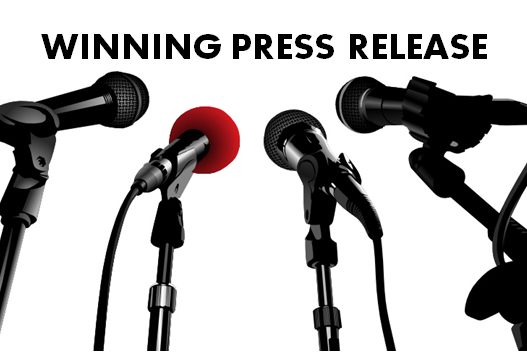
A press release is one of the primary ways you can communicate news about your company to the media. Reporters, editors, and producers are hungry for news, and they often depend on releases to tip them off to new and unusual products, company trends, tips and hints, and other developments. In fact, much of what you read in newspapers, magazines, or trade publications, hear on the radio or see on television originated in press release form. Unfortunately, the average editor receives as many as several hundred press releases each week, the vast majority of which end up getting “filed.” Your challenge is to create a release that makes the journalist want to know more and discover that your story is one they must tell.
Use these 10 tips to write a release that will get noticed.
Use an active headline to grab the reporter’s attention
The headline makes your release stand out. Keep it short, active, and descriptive; in other words, use something like “Doe Named Man of the Year” instead of “John Doe Gets Award”.
Put the most important information at the beginning
This is a tried and true rule of journalism. The reporter should be able to tell what the release is about from the first two paragraphs. In fact, chances are that’s all they may read. So don’t hide good information. And remember the “5 W’s and the H” – make sure your release provides answers to Who, What, When, Where, Why and How.
Avoid hype and unsubstantiated claims
A writer can smell a sales pitch a mile away. Instead of making over-inflated statements, provide real, usable information. Find legitimate ways to set you and your company apart and stress those points. To promote your business, write a release that answers questions about your business, rather than one that provides only general statements about how great or interesting your business is without saying why.
Be active and to the point
Use language that will get the reader as excited about your news as you are. If your release is boring or meandering, they may assume that you will not be a good interview.
Keep your release to two pages or less
On the rare occasion, you can opt for a third page if it is necessary to provide critical details. Otherwise, if you can’t state your message in two pages, you’re not getting to the point.
Include a contact
Make sure your release has a person the journalist can contact for more information. This person should be familiar with all the news in the release, and should be ready to answer questions. And issue the release on your company letterhead – it looks professional and gives the writer another way to reach your firm.
Keep jargon to the minimum
If you’re in a technical field, try not to use technical terms. Many reporters are not as intimate with your company or your industry as you are. Real English, not jargon, best communicates your story.
Stress benefits
This falls into the category of “don’t say it, show it.” Avoid saying something is “unique” or “the best.” Instead, show how people will benefit – i.e. save time, save money, make their life easier, etc.
Be specific and detailed
Marcia Yudkin, author of “Six Steps to Free Publicity” calls this the “Yes, but what IS it?” syndrome. The reader needs to be able to visualize a new product, or know how a new service works. If in doubt, have someone unfamiliar with your product or service read the release and ask them to describe what you are trying to publicize. And it’s better to use too many details than too few. So, as Yudkin notes, “Instead of ‘Jackson’s new book contains information designed to benefit any stock market investor,’ write, ‘Jackson’s new book contains seven principles of market analysis that enable even casual investors to choose profitable stocks.’ Even better, describe two of the seven principles right in the release.”
Proofread
When you’ve finished your press release, remember to proofread it for typographical errors. If you don’t have a good eye for spelling or grammar, give the release to a friend or colleague who does. If your release looks sloppy and careless, so will you.




